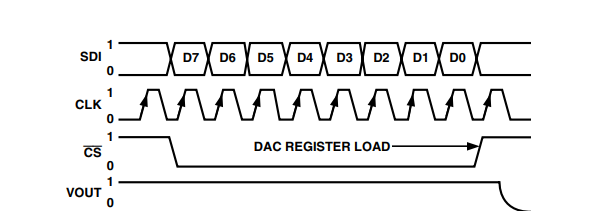
The AD5200 and AD5201 are programmable resistance devices with 256 and 33 bits respectively that can be controlled digitally via a 3-wire SPI serial interface. The terms programmable resistor, variable resistor (VR), and RDAC are often used interchangeably, exponential word potentiometer. These devices perform the same electronic regulatory functions as a potentiometer or variable resistor. The AD5200/AD5201 both include a variable resistor in a compact package. Each device contains a fixed wiper resistor at the wiper contact, which strikes the programmable resistor at a point determined by a digital code.
Functional block diagram

The code is loaded into the serial input register. The resistance between the wiper and either endpoint of the programmable resistor varies linearly with respect to the digital code transmitted to the VR latch. Each variable resistor provides a fully programmable resistance value between end A and the wiper, or end B and the wiper. Fixed a-to-b end resistance of 10 kΩ or 50 kΩ, nominal temperature coefficient of 500 PPM /°C. VR has a VR latch that holds its programmed resistance values.
AD5200 Timing Diagram

The VR latch is updated from an spi compatible serial to a parallel shift register loaded from a standard 3-wire serial input digital interface. The 8 data bits of the AD5200 and 6 data bits of the AD5201 make up the data words that enter the serial input register. The internal presets force the wiper into the mid-range position by loading 80H and 10H respectively in the AD5200 and AD5201 VR latches.
AD5201 Timing Diagram

The SHDN pin forces the resistor to open terminal A from end to end and short the wiper to terminal B to achieve the microwatt power off state. When SHDN returns to logical high, the previous latch setting puts the wiper in the same resistance setting as before it was turned off. During a shutdown, the digital interface is still active, so changes can be made to the code to produce a new wiper position when the device is turned off and returned. All components are guaranteed to operate in the extended industrial temperature range from -40°C to +85°C.